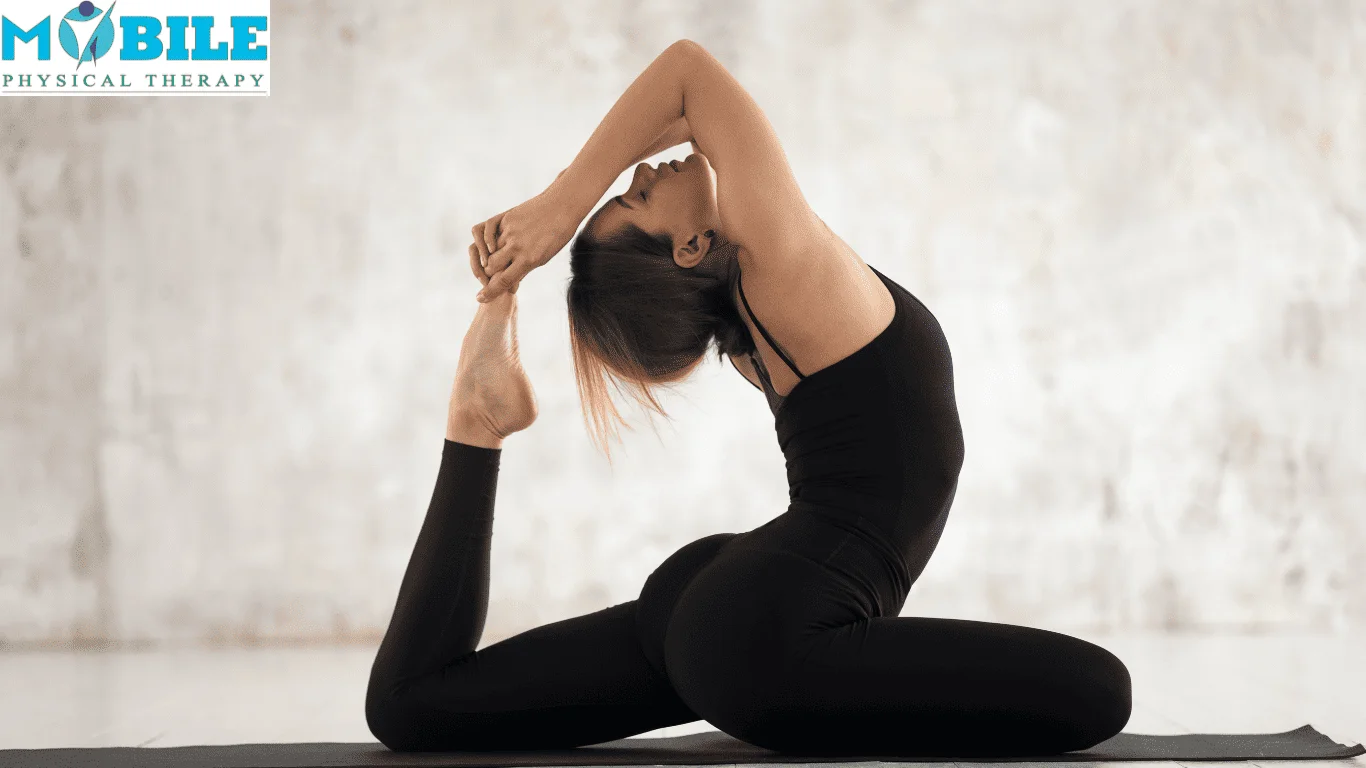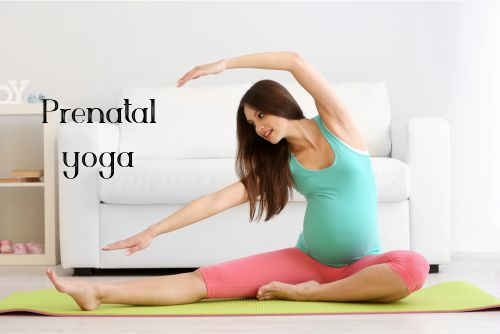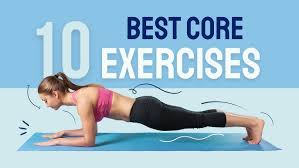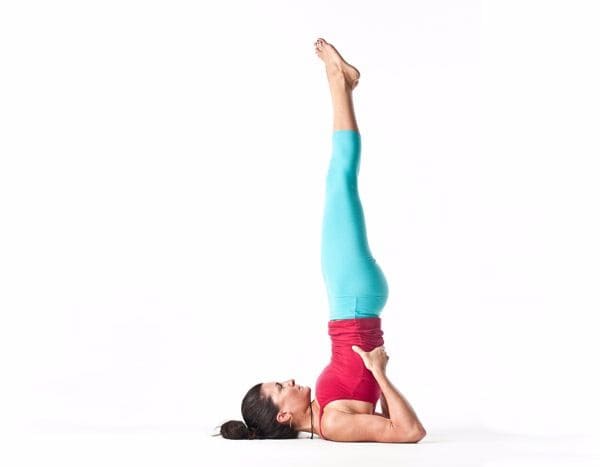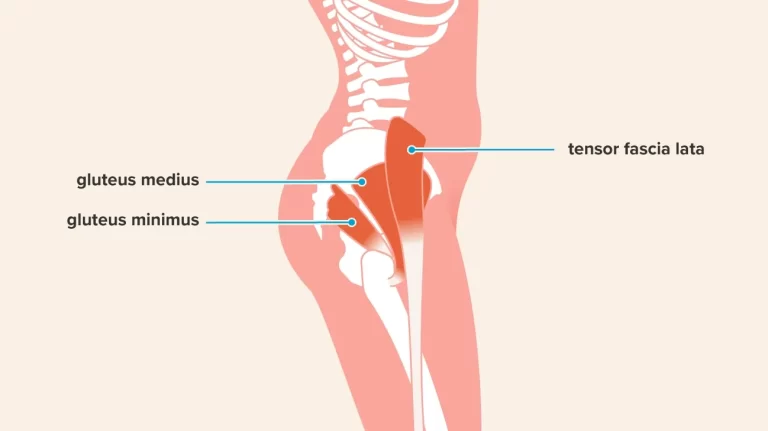Rajakapotasana (King Pigeon Pose)
Rajakapotasana:
Raja Kapotasana or King Pigeon Pose is an asana.
Rajakapotasana, commonly known as King Pigeon Pose, is a deep backbend and hip opener in yoga that provides a powerful stretch for the chest, shoulders, and thighs. This advanced pose not only enhances flexibility but also encourages mindfulness by integrating strength, balance, and concentration.
It is particularly beneficial for those looking to improve posture, release tension in the hip flexors, and expand their lung capacity through deep, focused breathing. However, due to its complexity, it’s essential to approach this asana with proper warm-up and alignment to prevent strain.
Table of Contents
Variations:
Variations include:
Eka Pada Rajakapotasana (One-Legged King Pigeon Pose) and
Salamba Kapotasana (Supported Pigeon Pose ).
Video of Rajakapotasana
Step of Rajakapotasana:
Steps of King Pigeon Pose (Rajakapotasana)
Begin off on your fours, ensuring your knees are set directly under your hips and your hands somewhat in front of your shoulders.
After that tenderly slide your right knee forward, with the end goal that it is simply behind your right wrist. During this, keep your right shin under your torso, and acquire your right foot front of your left knee. The exterior of your right shin must lie on the floor.
Gradually, slide your left leg to the back. Rectify your knee, and drop the front of your thighs to the floor. Bring down the exterior of your right backside on the floor. Place your right heels before your left hip.
You can also point your right knee towards the right, to such an extent that it is outside the line of the hip.
Your left leg ought to broaden itself straight out of the hip. Ensure it is not turned or bent to your left side. Now rotate it inwards, with the end goal that its midline is squeezed against the floor.
After that, take a long and deep breath; while you breathe out bend your left leg from the knees. At that point, push your middle back and extend as much as you can so that your head touches your foot.
Raise your arms, tenderly collapsing them at your elbows. Utilize your hands to bring your foot towards your head.
Keep up the upright position of your pelvis. Push it down. At that point, lift the lower edges of your rib and confine it against the weight of the push.
For lifting up your mid-section (Chest), push the highest point of your sternum straight up and towards the roof.
Remain in this position for around 30 to 60 seconds.
Now put your hands back on the floor and put your left knee down. Slowly slide your left knee forward.
Breathe out and get into the Adho Mukha Svanasana.
Rest for some time; return on your fours and relax. As you breathe out, do the asana with your left leg forward and right leg at the back.
Repeat this process with your right leg forward and once with your left leg forward.
Benefits of Rajakapotasana:
Rajakapotasana stretches your entire lower body.
It massages your abdominal organs, thereby improving digestion.
Strengthens your back and it relieves back problems like sciatica.
King Pigeon pose opens up your hips and makes your hips more flexible.
The profound stretch calms the body of anxiety and tension.
It opens up the mid-section (chest) and reinforces the crotch.
king pigeon pose likewise enhances the working of the urinary and regenerative frameworks (reproductive systems).
Modification of Rajakapotasana:
Firstly make sure the back has opened up well before practicing this pose. The entire body’s muscles should have been warmed up and ready for the pose. When the muscles are warm the body moves far more easily and no injury can occur.
Using a thick blanket below the thighs of the folded legs gives the hip and thighs the extra support and strength to take the twist and bend well.
If getting the folded leg’s shin parallel to the mat in front of you is a challenge, then work on bending the knees inwards and bringing the shin-deep inside and closer to the other inner thighs. After practicing this pose then one can work on bringing the shin parallel to the mat.
Use a yoga belt by placing it around the ankle of the leg behind you and using this support to pull and bring the neck and shoulders in alignment to remain in the pose comfortably.
Start the practice of this pose by using a bench or a chair. Place the leg on the bench or chair with the knee and shin placed parallel to the outside of the bench and feel the stretch in the inner thighs of the leg. Using the other leg stretch backward and allow the body to get used to this stretch. Holding the chair bend backwards as far as possible.
The teacher or the guide could help in holding your arms from behind or help in giving the lower hip support with his or her foot. It is important though the teacher or guide is experienced and plays with the flow of the body after having understood the student’s flexibility.
Strengthens:-
The inguinal region, Human back.
Stretches:-
The inguinal region, Thigh.
Type:
Sitting.
Effect of the spine:
Backbend.
Contraindication:
Injury:
Any kind of injury at the shoulders, hips, knees, ankle, etc. Inflammation at the back, neck, and shoulders too should be avoided. Dislocation of the shoulders.
Organs:-
A weak internal organ causing weak digestion may not help to do this asana without working on other simpler asanas for improving the digestive system. Women who are pregnant should avoid this advanced pose. Someone with a weak heart and suffering from acute asthma.
Others:
Someone suffering from deep depression and anxiety should avoid this pose. With less flexibility, this pose can cause discomfort and hence work on the flexibility with the simpler variations of Kapotasana before getting into this deeper pose. Someone with severe Osteoporosis should avoid this as a lot of stress happens at the hip, knee, and foot.

